Can You Feed Birds Grass Seed
Birds are truly a blessing in your garden. Besides those beautiful songs and displays for photography and videos, they also keep your garden safe from insects and pests. But they don't need to be there when you have just sewn your grass seeds.
These seeds are a good food source for several bird species, and they also can take a dirt bath in the solid that you have just raked. Now we all know that sowing seeds are a daunting task; therefore, you should know how to keep birds away from eating grass seeds.
In this guide, we will share with you some measures that you can take to keep the birds where you want them to be.
1. Protect the grass seed with repellent net
If you just cover your grass seed with something, it will keep them away from the seeds. The seed is already on the solid surface as you have raked it lightly. Now, if you cover them under the soil surface, up to ⅛ inches thick will work pretty well. You can use floating seed covers, fine grass seed netting, mulches, or dedicated bird net to keep the birds off the seeds.
You can take the grass seed protector away at some later stage when you notice that the grass is developing nicely. If you have to deal with fast blowing winds or those local birds in your area are clever enough to peck through the mulch, then netting or seed cover will work.
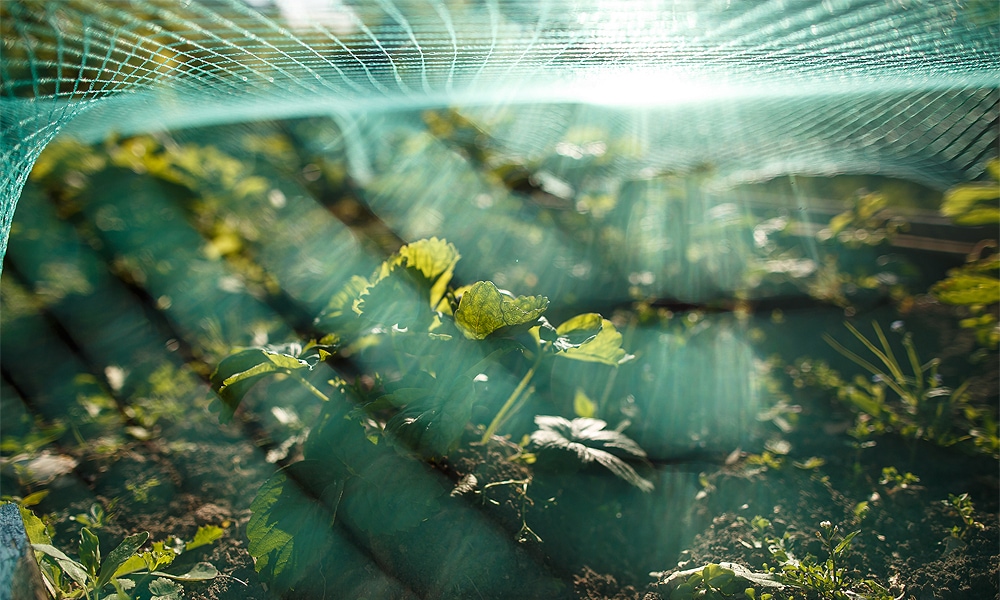
These polyurethane repellant nettings are lightweight. So they are not prone to mildew or mold, and they don't conduct electricity. Furthermore, they cannot absorb any chemicals or pesticides that you use on your plants.
Seed covers are very light and fine. You can lay them on the seeds directly. If you raise the net a couple of inches above the ground, it can prevent the birds from pecking, and your seeds will remain safe. However, you need to secure those edges of the netting with the heap of stones.
2. Use fake owls or hawks
Using fake predators to deter the birds is a good option, as it has worked pretty well for a long time. Seed eaters are not going to visit your place or land on the ground if you have placed a fake predator there.
It is exactly the reason why scarecrows have been so effective. Birds don't want to be in the area where they have spotted their predators lurking around. They don't care how tasty the birdseed seems. A fake owl, hawk, or even a rubber snake will work pretty fine.
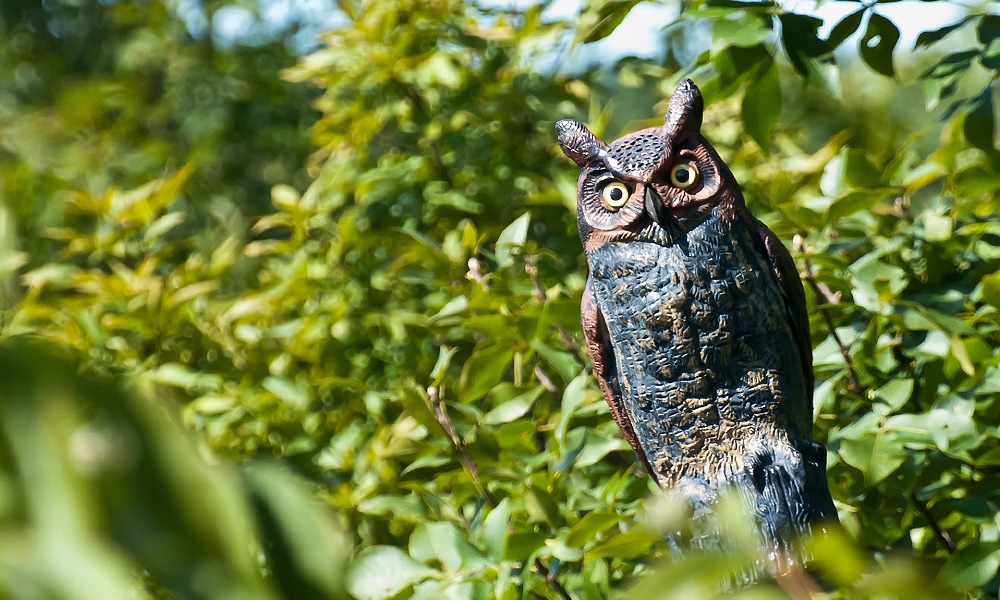
However, make sure that you regularly change the position and place of the fake predator, or the birds will suspect it. Make sure that you switch the position of the fake models to keep the birds in their real-world scenario.
The Bird Barrier Rotating Owl Bird Deterrent is a good option because it looks pretty real. The rotating head feature of this model further adds to the realism that it has to offer. It will surely keep those seeds of yours safe from birds pecking.
Related: 12 Tips on How to Get Rid of Owls Fast (2022)
3. Cover the seed with straw
Before you go with any kind of a cover, it is better for you to rake your seeds up to ⅛ of an inch under the soil. It will provide the seeds with a natural cover, and you won't have to do much to deter the birds from eating seeds. It is normally a good idea to leave some areas open for the soils to keep it natural for their growth.
When using mulch, it is better for you to use loose and light mulch. Hay or straw will be the most suitable option here. Such mulch will allow light and water to access the newly developing seeds.
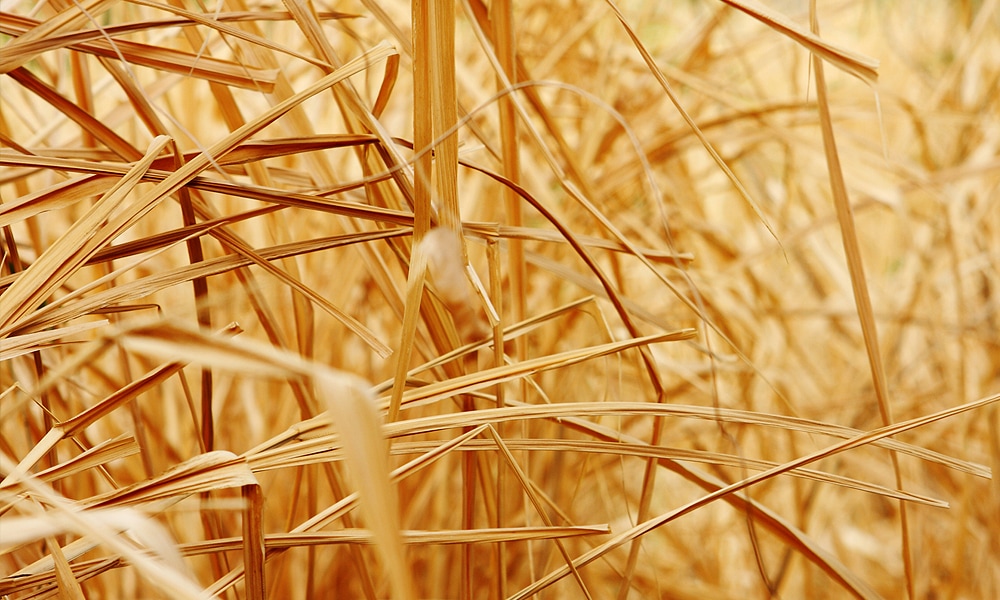
You need to scatter the mulch in such a manner that approximately 25% of the soil is still visible. Using a thin layer of straw right on top of the newly raked seeds is one of the oldest methods to prevent birds from pecking.
Until the seeds begin to germinate, you need to keep the layer on top of the seeds and then take it away. When the new sprouts grow, you need to get rid of the straw because these sprouts need sunlight to grow.
Also read: 12 Tips on How to Get Rid of Crows Fast (2022)
4. Use a decoy feeder
A bird-eating seed has to go through a lot of effort to get access to the seeds on the ground. Therefore, you can lure them into an easy feed area where they don't have to go through a lot to get to their food.
You can do this by keeping them away from the area where you have just sown the seeds by hanging a prominent bird feeder. But it needs to be away from your area that you want to protect by luring them.
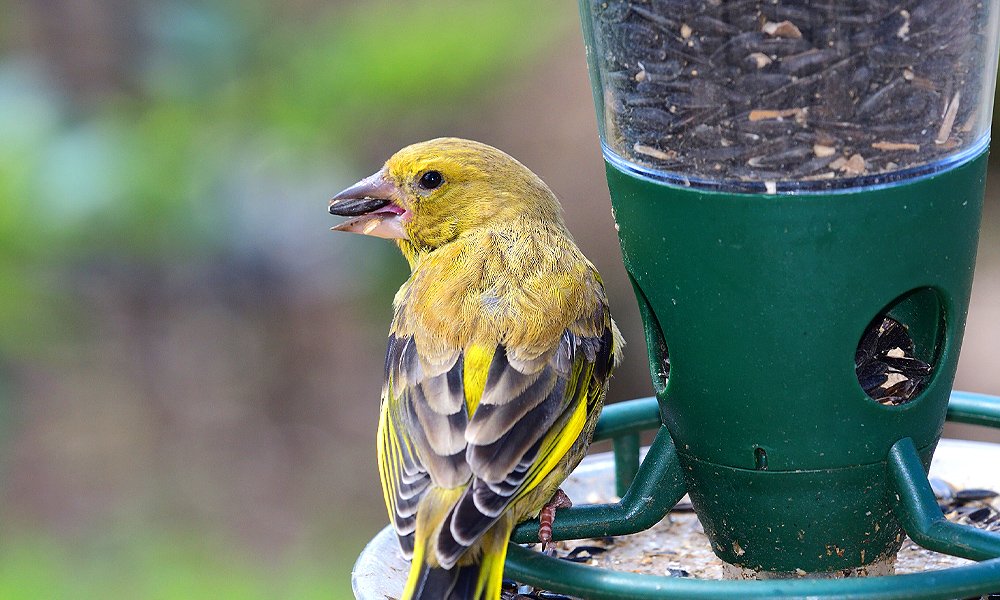
Those birds won't pay attention to your grass seeds and instead will focus on eating the seeds from the feeder, which is easier food. However, by having a bird feeder in your garden, you will be attracting more birds.
Therefore, you have to maintain a safe distance between the area you want to protect from the birds and the area that will be designated for the bird feeder to cover.
5. Cover the seed with burlap sheets
Burlap is a good choice because it allows the water to seep through and lets the heat and light to reach the soil as well. Grass seeds, like any other seed, need proper conditions with light, water, and heat to grow at a natural pace.
They won't be able to do that if these elements are taken away. Burlap sheets are a good alternative to that straw mulch. Still, they are ideally suitable for areas with windy conditions.
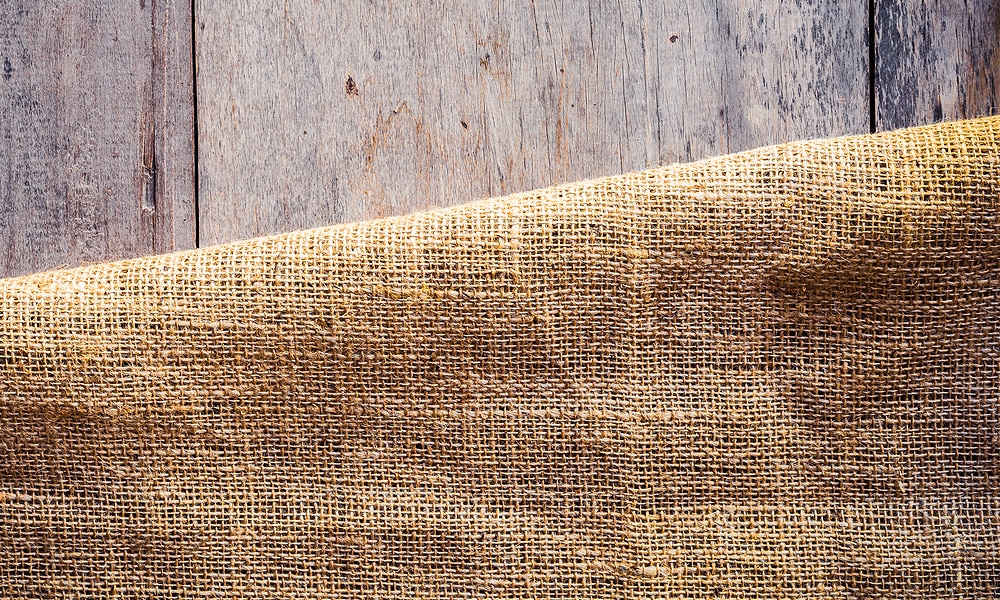
High winds can blow away straw mulch, and your grass seed will remain defenseless against those birds. If your garden has high windy conditions, then you need to lay down a sheet of burlap over the seeds.
Make sure that you anchor the edges of the sheets with the help of u-pin wires. You can remove these sheets once your grass seeds have germinated.
6. Lay down mulch
Mulch is not only helpful in maintaining the moisture of the soil; it also prevents any development and growth of any weeds. It will ensure that your grass seeds experience the optimum seed germination.
And besides that, it can also be very effective against the pecking birds, as we have explained above.
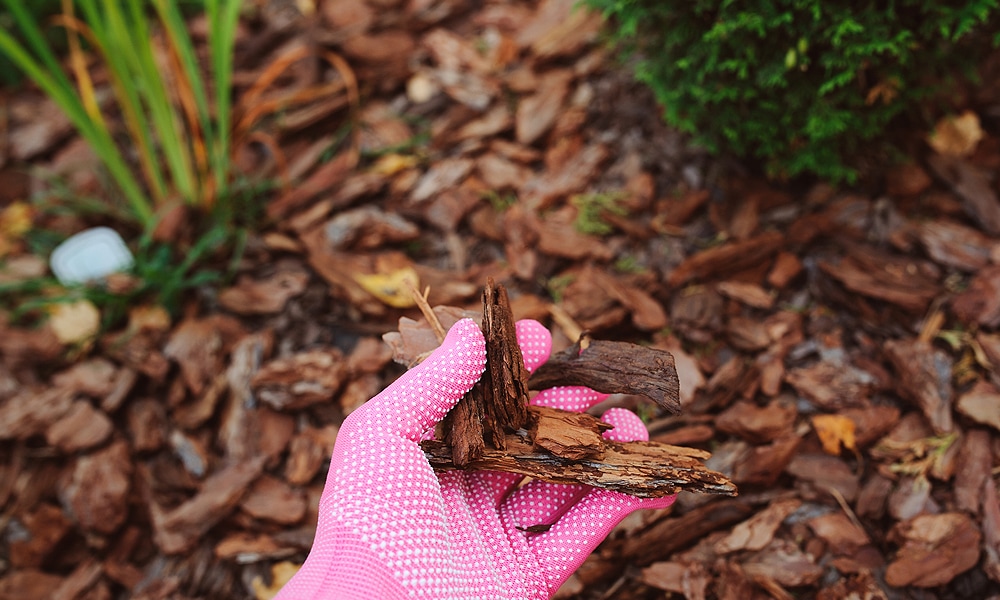
Make sure that you only choose a certified straw mulch that is weed-free. You can find it at most of the landscaping stores. You can scatter thin layers of hay or straw over your grass seeds and make sure that up to 75% of the soil is covered with it.
Your grass seed won't need anything else to defend itself from the pecking birds. Just get rid of the straw carefully once the grass seeds have germinated.
7. Create a noise deterrent
There are different types of noise deterrents that you can use to keep birds away from your garden, where you have freshly sown your grass seeds. The best thing about these sounds is that you don't need any specific type of sounds to keep the birds away.
Any kind of sound will work, and here is another advantage that these noise deterrents have. They are almost inaudible for most humans because they are ultrasonic.
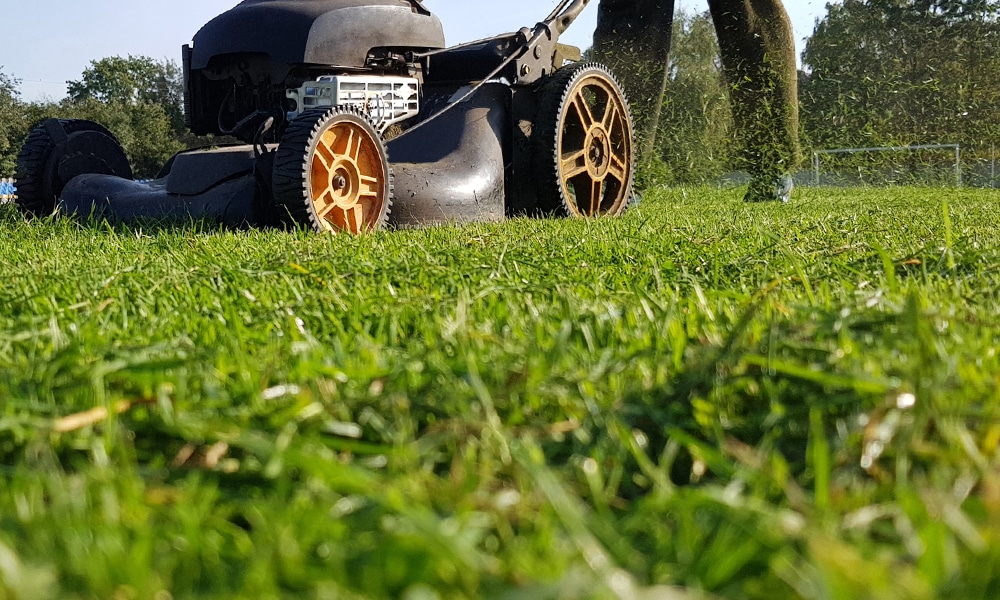
So these are essentially the noise tools for the birds but not for humans. So basically, your garden will be safe from any of those pecking birds.
You can use Cleanrth Bird Repeller Technology to make ultrasonic sounds; you won't be able to hear them. However, those birds will hear them, and they won't come near your garden for pecking seeds.
8. Plant extra seeds
Here's a proven strategy. No matter how much you are active in protecting your seedlings, there are always some chances that some of the seeds will be consumed by the birds, or some of them will even get blown away. Some of these seeds also tend to rot before their germination stage.
You can also use bird proof grass seed for this purpose. Bird repellent grass seed will be very effective because you won't have to do much here as it will be the least favorite seed for the birds.
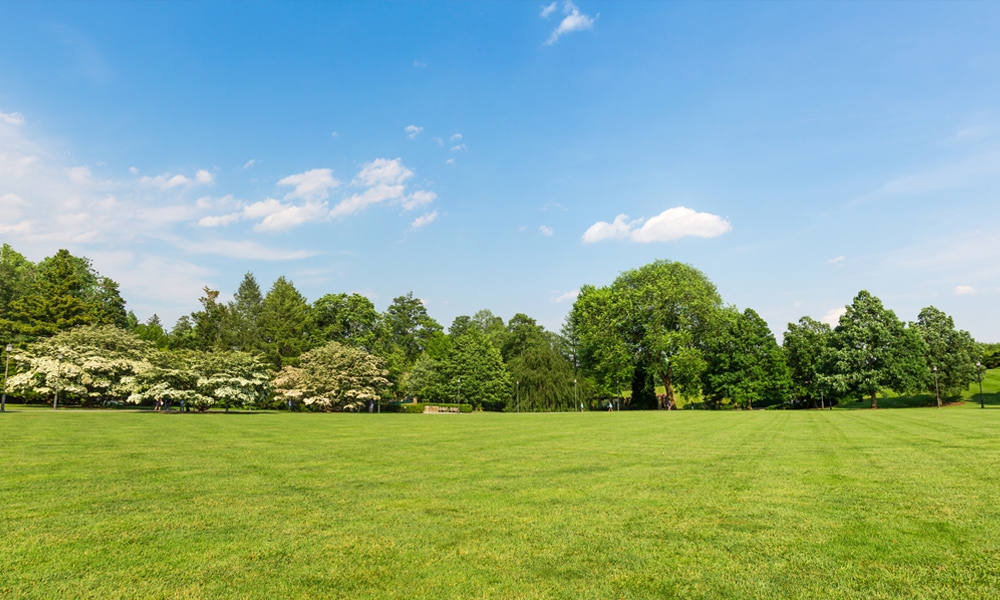
No one likes patchy grass growth in the garden; therefore, the best practice is to plant some extra seeds in your lawn. It will be a good compensation for the loss of any grass seed due to any reason.
Make sure that you plant at least 25% to 30% more grass seed to ensure that the grass doesn't grow in patches, and you won't overcrowd it either.
9. Reflective scare tape
Another good tactic for you to keep those birds away from your seedlings is to use reflective scare tape. Birds don't like these reflective tapes, and they don't come near the place that has these tapes hanging.
These tapes are highly effective against grackles, pigeons, geese, woodpeckers, herons, blackbirds, and many others.

And if you have fixed the tape properly, then it is not going to go anywhere at all. Bird Deterrent Reflective Tape is a good quality tape that you need in your yard. The reflective tape will keep the pecking birds away and your grass seeds safe.
You can either throw it on the ground or hand it from the trees nearby. Sticking it on the wall or poles would be a good choice too.
Also read: 12 Tips on How to STOP Birds From Flying Into Windows
10. Orbit motion-activated bird deterrent sprinkler
Here is another effective strategy that you can use to fend off those birds that are after your grass seeds. There are various advantages of using this motion-activated sprinkler apart from deterring birds.
It will keep your garden propel watered and will only work when detecting motion. It will start sprinkling water over the grass when it detects motion or when a bird enters its territory. Moreover, it is a good way to keep energy conserved as well.
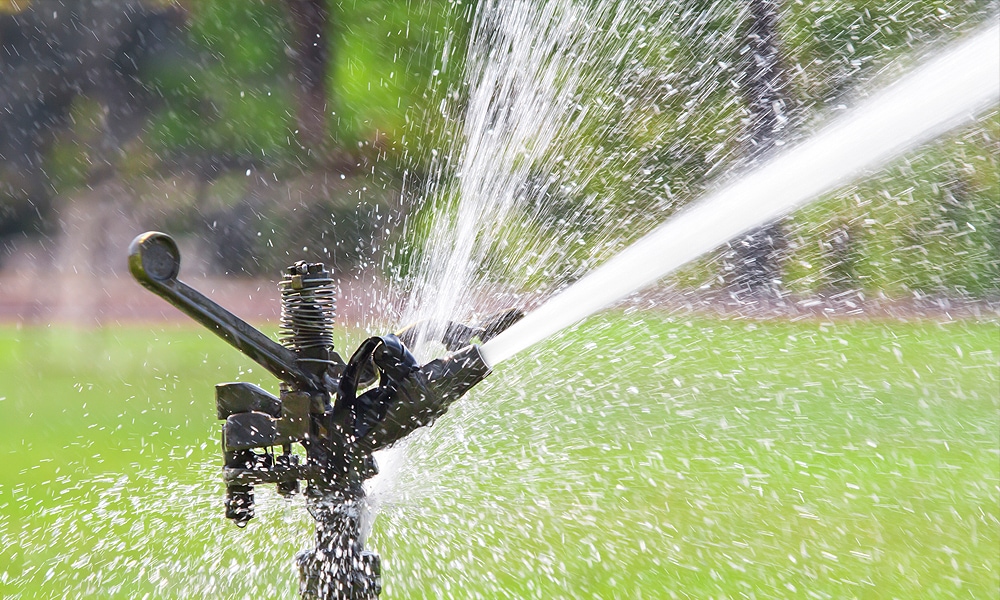
Some of them also come with inbuilt noise deterrents. Therefore, they are highly effective against birds as well as other animals like squirrels, etc.
One of the best products in this category is the Orbit Enforcer Sprinkler that will make sure that birds, as well as other invaders, stay away from your grass seeds.
11. Hanging spiral bird deterrent
It is another good option if you are looking to further enforce deterring. The hanging swirls can work not only as bird deterrents, but they can also be a good choice for you to decorate your yard with a bit of ornament. They look pretty nice, especially when the wind blows through them.
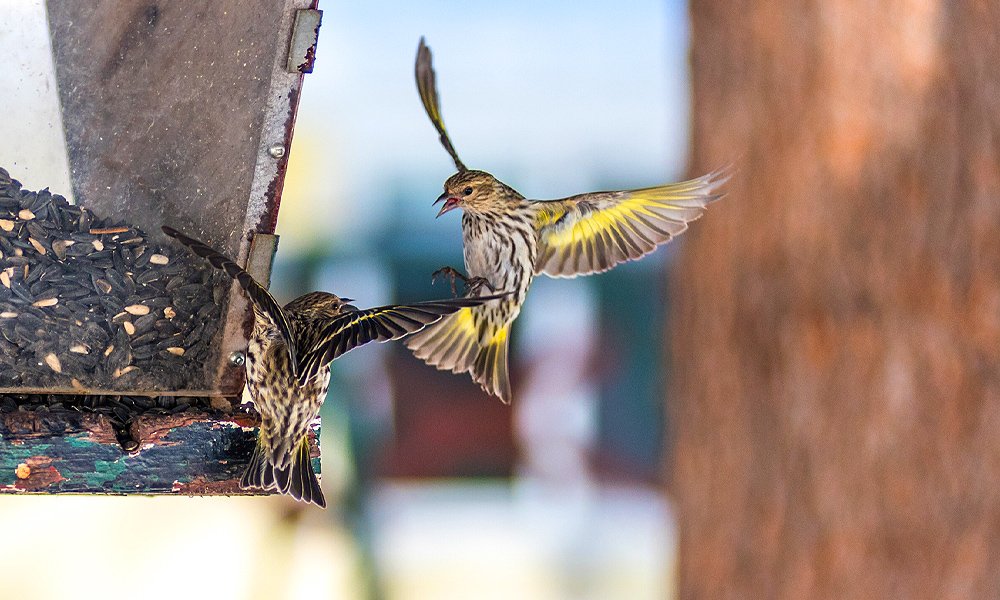
And the good thing is that you hang them wherever you want. So they are super simple to use as well.
Hanging Spiral Bird Deterrent is a great choice if you are looking for an ornamental decorative item that you can also use as your bird deterrent. When moving due to wind, it will reflect light that will scare the birds eating grass seed, and they won't think about returning.
12. Use burlap over grass seed
Burlap is highly effective against the winds, so if you live in a windy region, then mulch and straw are not going to be very useful for you. The straw is going to be blown away once the wind starts to pick up speed.
You don't want your seeds to be in such a vulnerable condition at the mercy of the pecking birds. Therefore, you can go for burlap sacks if you want to tackle the windy situation. You can also go for those burlap rolls and lay the sheets directly over the seeded soil for protection.

You might be thinking that these sheets are too heavy and dense for the seeds to grow under them. But your grass seeds will do great under them. These sheets will allow the elements to penetrate and allow the seeds to get all the nutrients they need to grow.
Just lay down one of the sheets over the seeds and pin it down with those u-pins at the edges. Make sure that you remove the sheet once the seed is germinated.
Source: https://worldbirds.com/how-to-keep-birds-from-eating-grass-seed/
0 Response to "Can You Feed Birds Grass Seed"
Post a Comment